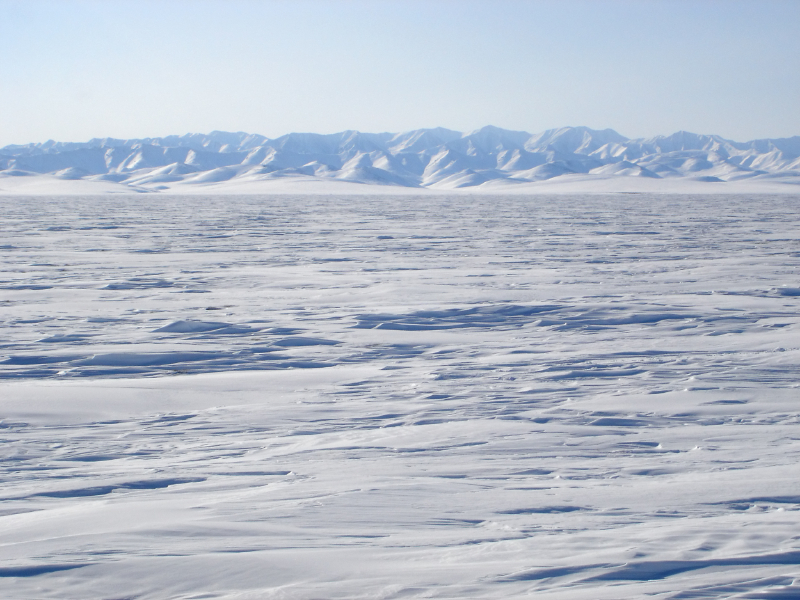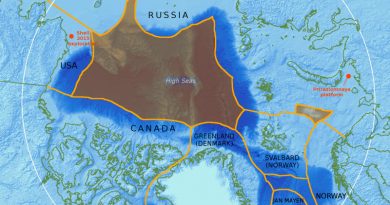Canada ponders exceptions to relief well rule for Arctic oil drilling

Companies drilling offshore for oil in the Canadian Arctic have long been required to show that they are capable of rapidly sinking relief wells to quash blowouts. The decades-old Canadian “same-season relief well” standard — generally requiring companies to secure backup relief-well rigs for all drilling projects in Arctic waters — is being eyed by officials with the U.S. Department of the Interior as a model for pending Arctic-specific rules for offshore oil and gas development in the U.S. Arctic.
Now the Canadian government is considering granting exceptions for companies seeking to drill in deep waters of the icy Beaufort Sea.
The National Energy Board, which oversees offshore oil and gas development in Canadian Arctic, is reviewing requests to allow alternative safety and spill-response measures in lieu of the same-season relief well standard that has been in place in Canada since 1976.
The requests are from the Imperial Oil Joint Venture — a partnership comprising Imperial Oil, Exxon Mobil and BP — and Chevron. The Imperial venture is seeking to drill at a site about 110 miles northwest of Tuktoyaktuk. Chevron’s prospect is about 155 northwest of that Northwest Territories community. The companies would drill as early as 2020, in waters almost 1 mile deep — roughly the same depth as the site where the 2010 Deepwater Horizon disaster occurred in the Gulf of Mexico.
Rule challenged
This is not the first challenge to the same-season relief well requirement. In 2009 and 2010, Imperial and other companies argued that the rule was too narrow and should be modified.
Among the companies arguing against the rule was BP, which in 2010 pooled its Canadian Beaufort leases with Imperial and Exxon to form the joint venture.
Requiring same-season relief well capacity “is problematical for BP and other operators, and may well impede further exploration in the Beaufort Sea,” BP said in a written statement submitted to the NEB on March 22, 2010. Instead of requiring a second rig to be available to drill a relief well, which would be just “one of a suite of after-the-fact tactics to deal with a well control problem,” companies should be allowed to focus on preventing blowouts in the first place, BP argued then.
“The preventative approach has been successfully applied by BP in its well operations for years, and has included experience at some very challenging wells all over the world,” the company said in its March 22, 2010 statement to the NEB.
A month later, BP’s exploratory Macondo well blew out, killing 11 workers at the Deepwater Horizon drill rig and causing the worst oil spill in U.S. history.
Different conditions require different rules
In the current debate over the relief-well rule, the companies argue that with such short open-water seasons and such deep waters at the targeted locations, each exploration well will require several seasons to drill, making same-season relief wells impractical.
The applications were submitted to the NEB in April and May. Further investment in Beaufort drilling may hinge on the NEB decision, Chevron told the board. Until then, “Chevron will be unable to assess the economic viability of a potential drilling project,” said a June 23 letter to the NEB from the company’s attorney.
The NEB is willing to consider alternative safety measures, as long as the fundamental goal of the same-season relief well standard is met or exceeded, said Tara O’Donovan, spokeswoman for the board.
“Ultimately, our goal is that the public are safe and the environment is protected,” O’Donovan said.
Environmentalists concerned
If Canadian regulators decide to be flexible, U.S. regulators should follow suit, said Kara Moriarty, executive director of the Alaska Oil and Gas Association. “What’s important for further Arctic operations in Alaska is that the U.S. government approach regulation from a performance-based standard versus an it-always-has-to-be-that-way standard,” she said. Her trade organization is urging the Interior Department, as it crafts the Arctic offshore standards, to avoid prescriptive rules such as mandates for standby relief-well rigs, she said.
But some environmentalists are already weighing in, saying it’s a bad idea for the NEB to even consider wavering from the specific same-season relief-well requirement.
Even considering an alternative to the same-season relief well standard “sets a dangerous precedent for the Arctic,” the Natural Resources Defense Council said in a July 17 letter to the NEB.
The problem, said NRDC’s Chuck Clusen, is that the Imperial and Chevron projects are fraught with double challenges — an icy, remote Arctic location and deep water.
Under such conditions, “It would be impossible, potentially, to drill a relief well in the same season, which then means you have oil spewing all winter long, under the ice,” Clusen said in an interview, the organization’s leader for Alaska and national parks. That means a blowout could affect resources in Alaska and Arctic-wide, he said.
‘Possible but costly’
The companies could commit to drilling relief wells at the same time they are sinking the exploration wells, “which is technically possible to do,” Clusen said. “It would just be costly.”
Shell, the only company to drill in U.S. Arctic waters in recent years, operated under a mandate similar to the same-season relief well standard when it did preliminary drilling on wells in the Chukchi and Beaufort in 2012. It mobilized two rigs, each that could be a backup for the other. The company’s revised plan for future offshore Arctic drilling, which has yet to be approved, also contemplates a main rig and a backup rig — the Polar Pioneer, to take the place of the Kulluk, which was wrecked in a Dec. 31, 2012 grounding.
NEB spokeswoman O’Donovan said the board does not have a target date for a decision on the Imperial and Chevron applications. The board is just launching the scoping process, with the first round of public comments accepted through Aug. 15, she said. The companies have not yet submitted detailed plans for NEB review, though those are expected by the end of the year, she said.
Following the 2010 Deepwater Horizon spill, the board launched a review of Arctic offshore drilling and oversight of it, with results released in December 2011.
The review clarifies that the NEB will evaluate, on a case-by-case basis, any application that would depart from the same-season relief well policy. Any approved deviation, the NEB review said, must “meet or exceed the intended outcome of our policy,” the review said. “It would be up to us to determine, on a case-by-case basis, which tools are appropriate for meeting or exceeding the intended outcome of the Same Season Relief Well Policy.”
Ninety-two wells have been drilled in the Canadian Beaufort since oil and gas activity began there in the 1970s, according to government records. The last well was drilled there in 2005 and 2006 by Devon Energy.
Related stories from around the North:
Canada: Canada’s Arctic patrol plan ‘disaster:’ report, CBC News
Finland: Dockers’ strike shuts down Finnish ports, Yle News
Norway: Norwegian company looks to Alaska for Arctic shipping port, Alaska Disptach
Russia: New port in Murmansk, Russia slated for coal exports, Blog by Mia Bennett
United States: Alaska senator calls for investment in Arctic Ports, Alaska Public Radio Networks



